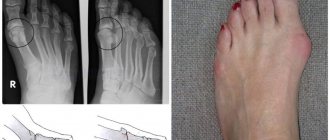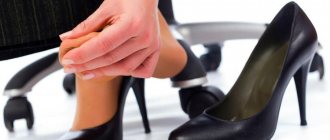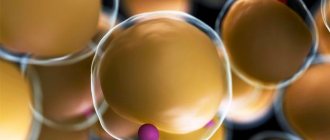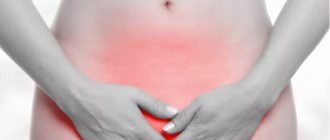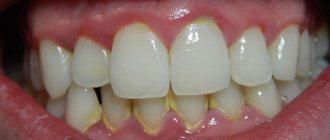Dermatovenereologist (cosmetologist)
Baichorova
Marua Azretovna
20 years of experience
Dermatologist (cosmetologist)
Make an appointment
Sweating is a natural mechanism formed during the process of evolution. Its primary function is body thermoregulation. Almost all mammals have sweat glands. When the body heats up, they are activated and release a specific liquid that cools the body during evaporation. Sweating is also involved in the process of removing excess water, metabolic products, salts and other substances through the skin. That is, this is a natural process, but for some people it proceeds too rapidly, even for no apparent reason. The phenomenon is called hyperhidrosis.
Normal sweating
Hyperhidrosis is not a disease, but rather an individual characteristic of the body, which causes a lot of trouble in everyday life. Normally, increased sweating is a common reaction to the following factors:
- temperature increase;
- physical exercise;
- stress;
- hot and spicy food;
- hormonal changes associated with menopause, pregnancy, puberty.
In addition, it can be a side effect when taking certain medications.
With little physical activity, a person produces about 0.5 liters of sweat per day, but as temperature and load increase, this volume can increase to 10 liters. Sweat glands respond to signals sent by the brain in two ways:
- increase or decrease the amount of sweat;
- open for active release of moisture, or close.
You can make an appointment with a doctor by phone
8-(4822)-33-00-33
or using the online registration system on the website
Make an appointment with a doctor
If there are no objective reasons for excessive sweating, they look for pathological causes of hyperhidrosis of the palms. These include:
- endocrine disorders, including hormonal imbalance;
- infectious diseases;
- hereditary pathologies;
- mental illness.
Physiological hyperhidrosis does not require drug correction. It occurs in response to external stimuli and goes away as soon as they stop affecting the body. Pathological sweating is not only an inconvenience, but also a symptom of serious diseases. Therefore, this condition should not be ignored and hope for independent recovery.
Types of hyperhidrosis
There are primary and secondary hyperhidrosis. The first is a permanent property of a person; it begins to manifest itself in childhood or adolescence, while the work of the sweat glands deviates from the norm. They may open too quickly or not close at all, causing increased sweating even in a cool room. The reason for this phenomenon still remains unclear.
The second develops in certain diseases. Among them:
- vegetative-vascular dystonia;
- tuberculosis;
- neurasthenia:
- syphilis;
- rheumatism;
- pathologies of the nervous system;
- diabetes;
- a sharp decrease in blood glucose levels;
- oncology;
- hyperthyroidism.
Statistics say that about 5% of people in the world suffer from primary hyperhidrosis, which is equally common in men and women, and secondary – about 15%. It manifests itself locally, only in certain places where the largest number of sweat glands accumulate (under the arms, on the feet, head, face, palms, groin), or generalized. And although this condition does not pose a threat to health, excessive hydration can have unpleasant consequences:
- local swelling, redness and inflammation;
- body hypothermia;
- psychoemotional disorders.
Are you experiencing symptoms of hyperhidrosis?
Only a doctor can accurately diagnose the disease. Don't delay your consultation - call
What examination is needed?
If you have excessive sweating, you need a dermatologist, and if you have hyperhidrosis of the feet, you need a podiatrist. To find out the type and causes of hyperhidrosis, the doctor will definitely conduct an examination before treatment. If necessary, he will refer you to a neurologist or other specialized specialists.
Answering the following questions will help you determine the type of hyperhidrosis:
- Does sweating happen for no apparent reason?
- Is it the same on both sides of the body?
- How does it affect quality of life?
- How often do episodes of excessive sweating occur?
- When did the first symptoms appear?
- Do relatives have this problem?
- Do you sweat during night sleep?
Special functional tests have been developed to assess the degree of hyperhidrosis. They are used to determine the amount of sweat secreted, the intensity of sweating, and find the places on the body where it is most pronounced. Most tests have no practical diagnostic value. They are used for scientific research or to evaluate the effectiveness of treatment.
These methods include:
- calculation of body weight loss over a certain time;
- absorption of sweat from the skin or in special chambers by various absorbers;
- measurement of skin surface resistance, which changes depending on the intensity of sweating;
- provocative tests with the introduction of substances that stimulate or inhibit sweating;
- tests using substances that can change color when combined with sweat (iodine-starch test).
In case of secondary hyperhidrosis, the doctor will ask you in detail about your health status. He will prescribe blood and urine tests, hormonal tests, and measure blood pressure to find the true cause. If you have a chronic illness or are taking any medications, tell your doctor.
Which doctor should I contact? Diagnostics
If you have hyperhidrosis, you should first consult a therapist, who can refer the person for further consultation to the following specialists:
- a dermatologist if there are signs of dermatosis and inflammation of the sweat glands;
- to a neurologist if autonomic disorders are suspected;
- an endocrinologist to rule out diabetes mellitus and thyroid dysfunction;
- cardiologist, for angina pectoris;
- an orthopedist, since sweating of the feet often accompanies flat feet;
- a psychotherapist if the problem is psychological in nature.
In order to determine the degree of hyperhidrosis and areas of increased sweating, the Minor test is used. Take a 2% iodine solution, apply it to the skin area under study, dry it and sprinkle with starch. If sweating exceeds the norm, the skin turns purple and sometimes black. These areas are then marked for subsequent treatment.
Diagnostics
Effective treatment cannot be prescribed without identifying the cause of the disease. Therefore, a number of analyzes are required:
- determination of the level of T3 and T4 in the body;
- Ultrasound of the thyroid gland;
- general blood analysis;
- fluorography;
- biochemical blood test, including glucose.
After a comprehensive examination, the doctor draws conclusions whether a person’s hyperhidrosis is physiological or pathological. In the second case, the detected diagnosis is made and the necessary treatment is selected.
How to treat hyperhidrosis
If secondary hyperhidrosis is diagnosed, the underlying disease should be treated to eliminate it. In the case of primary, general tonic agents are often prescribed; it is also recommended to use disinfecting and skin-drying powders and strong antiperspirants. Sometimes treatment with a psychotherapist is also required. If the above methods do not produce results, more serious therapy is recommended.
Iontophoresis
This method has proven itself well for hyperhidrosis of the palms and feet. To do this, the hands and feet are immersed in warm water, through which a weak electrical discharge is passed. There are no painful sensations. To noticeably reduce sweating, two to four procedures of half an hour are enough.
Botox or Dysport
These drugs containing botulinum toxin are widely used in cosmetology to remove wrinkles on the face, due to their ability to block neuromuscular transmission. They have also proven effective in treating hyperhidrosis. They are injected into areas of increased sweating to block the nerve endings that activate the sweat glands. Usually several injections are required, but they last for a certain period (about six months), after which the course will have to be repeated.
Anticholinergic drugs
These drugs are widely used in the treatment of Parkinson's disease and spastic paralysis. It turned out that they also help with hyperhidrosis by blocking nerve impulses sent to the sweat glands. A positive effect occurs two weeks after starting to take medications, but they should be taken with caution in case of hypertension, atherosclerosis, problems with the heart, liver and kidneys.
Endoscopic sympathectomy
When previous methods do not produce results, you can decide on surgery - endoscopic sympathectomy, in which the surgeon removes the nerves that conduct electrical signals to the sweat glands. This method can only be used for hyperhidrosis of the palms, armpits and face, and it also has many contraindications.
How to get rid of sweaty hands?
How to remove and reduce sweaty hands? Today there are a lot of cosmetological techniques that allow you to do this. It is important to understand that they have a certain duration of effect, which means that the result of minimally invasive procedures will need to be maintained periodically (approximately once every 8-12 months).
In the treatment of sweaty hands, the use of medical antiperspirants is possible, but extremely difficult and inconvenient. In addition, moisture constantly appearing on the palms washes away the active composition of the antiperspirant and its use becomes ineffective. Talc and antiperspirants can protect skin, clothing, and create the illusion of freshness, but they do not affect sweating in any way.
The use of electrophoresis (iontophoresis) can help maintain some dryness of the palms, but the procedures must be carried out regularly over a long period of time.
One of the effective and popular remedies for palmar hyperhidrosis (excessive sweating of the hands) is botulinum therapy or Botox injections.
Hyperhidrosis in children
A child's sweat glands are activated from the 3-4th week of life, but they will become fully operational only by the age of 5-6 years. Due to incomplete formation, the body can react to various stimuli with a violation of thermoregulation. A fun game, prolonged crying, too dry air in the apartment, even evening breastfeeding can cause perspiration on the forehead. And that's okay. It is only important to ensure a comfortable ambient temperature:
- for newborns – 23-24 °C;
- for children 1–6 months – 20–22 °C;
- for children from 6 months to 1 year – 19-20 °C;
- for children over one year old – 17–19 °C.
The apartment should also maintain high air humidity, about 70%.
But sometimes parents may experience increased sweating in their child while sleeping in a rather cool room. There may be several reasons for this:
- Vitamin D deficiency and rickets. In this case, increased sweating is observed on the head, neck, palms, feet, and armpits. At the same time, sweat has a sour smell, it is sticky, and its secretion increases during sleep;
- heart failure. Hyperhidrosis in a child can be observed with congenital heart abnormalities, in addition to this, there is cyanosis of the skin, general lethargy and weakness, and slow weight gain;
- viral or bacterial infections;
- helminthic infestation;
- genetic diseases phenylketonuria and cystic fibrosis;
In adolescence, hormonal changes in the body begin, so nocturnal hyperhidrosis occurs quite often during this period. Over time, the work of the sweat glands normalizes.
What do sweaty palms indicate?
Those who are faced with the problem of excessive sweating on their hands agree that there is little pleasant in such features of the body. However, few people know that the intensity, consistency and temperature of that same sweat can tell you a lot about your health.
If the sweat on your hands is cold, this may be a sign of:
- hypothermia;
- weight deficiency;
- lack of vitamins and minerals (especially magnesium and iron);
- circulatory disorders (including due to a sedentary lifestyle and lack of fresh air).
Cold sweat on the palms can often be seen in smokers and alcohol abusers. In addition, wet and cold hands can be one of the symptoms of diabetes, diseases of the thyroid gland or nervous system, osteochondrosis, vascular dystonia, Raynaud's syndrome.
An equally alarming signal is sticky sweat. It can appear with diabetes, pancreatitis, serious heart disease or severe intoxication caused, for example, by large portions of low-quality alcohol. If sticky sweat appears at night, accompanied by general weakness and low-grade fever, this may be one of the signs of tuberculosis. Sticky sweat on the body, including on the hands, combined with enlarged lymph nodes and pale skin sometimes indicates the growth of a malignant tumor.
Separately, it should be said about sweating hands in children. If a child's palms are often wet, this is a reason to take the baby to the doctor. This sometimes happens with vitamin D deficiency, heart failure, an overactive thyroid gland, or the use of antipyretic or painkillers.
Folk remedies for hyperhidrosis
Before deciding on radical therapy, you should try traditional methods of combating hyperhidrosis. The most popular and effective is a decoction of oak bark. In addition to the fact that it helps normalize the functioning of the sweat glands, it also has a bactericidal effect. The decoction is prepared according to the instructions on the package. It should be used as a lotion on problem areas after taking a shower for 20 minutes. You can store it for several days in the refrigerator.
It is useful to wipe areas of excessive sweating with a cotton swab dipped in apple cider vinegar. It is recommended to do this as often as possible during the day, and a compress for 10 minutes before bed will not hurt. For hyperhidrosis in men and women, a contrast shower in the morning and evening is useful. A sharp change in temperature teaches the sweat glands not to react so violently to temperature changes.
Use of products: antiperspirants and deodorants
Antiperspirants are not medicines, but products that prevent increased sweating after treatment. For hyperhidrosis, it is better to use products that are sold in pharmacies, or resort to traditional medicine recipes. It is recommended to combine products, adhering to the rules of use.
Deodorants for hyperhidrosis are applied before bedtime so that the effect begins in the morning. This is the optimal time for application, since the glandular ducts do not function at night. The application area must be dried, you can use a hairdryer.
The composition often includes aluminum chloride hexahydrate. Such antiperspirants are medicinal and are used in the evening, before bed, once every five days. With continued use, you can achieve normalization of sweating and switch to your usual products.
What traditional medicine offers:
- alum – minerals with antibacterial effects;
- Jojoba oils, as well as tea tree and coconut oils, are effective against sweating;
- kaolin powder.
To get rid of the accompanying unpleasant odor, use baking soda.
Prevention
If you are prone to excessive sweating, it is recommended not to consume excessive amounts of alcohol, caffeine and nicotine, which stimulate the sweat glands. It is also recommended not to wear clothes made of synthetic fabrics, but to choose loose-fitting models that do not hug your figure.
If your feet sweat excessively, you should wear shoes and socks made from natural materials that absorb moisture well. However, they should always be worn under closed and sports shoes.
People suffering from hyperhidrosis have to shower more often than others and use stronger antiperspirants, which reduce the amount of sweat produced.
It is also recommended to pay attention to whether there are any side effects in the form of increased sweating from medications prescribed by doctors. Perhaps there is an alternative.
And most importantly: you need to learn to resist stress and control your emotions. Consultations with a psychotherapist, as well as various psychological practices, can help with this.
Symptoms and consequences
The disease has symptoms of varying severity. There are several levels of severity. At level 1, sweating does not interfere with human activity; it is invisible. At level 2, hyperhidrosis may interfere with daily life, but the disease is tolerable. At level 3, the problem causes significant inconvenience. At level 4, excessive sweating interferes with a person's ability to carry out daily activities.
In severe cases, the following symptoms are observed:
- swelling;
- pain;
- redness;
- constant cooling of the body due to evaporation of fluid;
- psychosomatics – problems in society, anxiety, rapid heartbeat.
Symptoms are aggravated by stressful situations, strong emotionality, warm seasons, body heat, as well as the consumption of chocolate products, coffee and certain spices.
Many people experience seasonal increased sweating in the spring and summer. Constant manifestations are rare - sweating occurs regardless of the weather and is not associated with activity or stress. Relapses may occur when, after hyperhidrosis, the work of the sweat glands returns to normal, and then increased sweating returns. This is usually due to hormone surges and disruptions in the functioning of the autonomic nervous system.
In most cases, the cause of the disease is not known; the pathology can be caused by high activity of the reflexes responsible for sweating. Hyperhidrosis of the armpits and palms is typical for people under 25 years of age and appears for no reason. Genetics matters; in more than 40% of cases there is a history of the disease.
Medicines to treat excessive sweating:
- Antiperspirants. They contain aluminum or zinc salts and act as follows: they narrow the ducts of the sweat glands, reducing the process of sweating by 40%. But they practically do not destroy microbes. Antiperspirants are very strong products; they should be used sparingly, especially in hot weather, and should only be applied to clean skin.
- Physiotherapeutic methods of treatment – iontophoresis. A low-intensity electric current is passed through the area of the sympathetic nodes, through the skin, and parts of the body affected by hyperhidrosis, which acts directly on the cells that secrete sweat, reducing their activity.
- Drug therapy. This treatment method targets fungi that feed on sweat. Armpits are not treated with deodorants, but with antifungal ointments and liquids. These drugs can cause skin irritation and are not very effective, but they do help some patients.
- Surgical intervention (curettage) is prescribed only in exceptional cases, if therapeutic treatment has not given a satisfactory result. A contraindication to curettage of the armpits is pustular skin lesions in the armpit area, as well as the patient’s severe general condition. The positive effect lasts for life, sweating is reduced by an average of 80%.
- Injections with Botox, Dysport, Xeomin. The mechanism of action of these drugs is to block the conduction of nerve fibers that innervate the sweat glands. Having been “deprived” of a nerve impulse, the sweat glands stop producing an “abnormally large” amount of sweat. This eliminates excessive sweating. The effect after the procedure occurs within 3-10 days and lasts 6-12 months. To date, this is the most proven and effective treatment method. After treatment, not only the condition of the skin in the area of intervention will significantly improve, but also the patient’s mood and communication with others. The method is used to treat condensation in the armpits, feet, palms, scalp, and back.
How does the procedure “Treatment of excessive sweating” with Botox, Dysport, Xeomin take place?
To determine the area where the problem is present and calculate the required number of units of the drug, the Minor test is used. The armpits are dried and treated with an aqueous solution of iodine, then sprinkled with starch. Sweating areas turn a bright blue-black color. The doctor calculates the number of units of the drug. After this, local anesthesia is performed (usually a cream containing lidocaine), then the skin is disinfected and the drug is injected using a thin short needle. The whole procedure takes 15-30 minutes.
